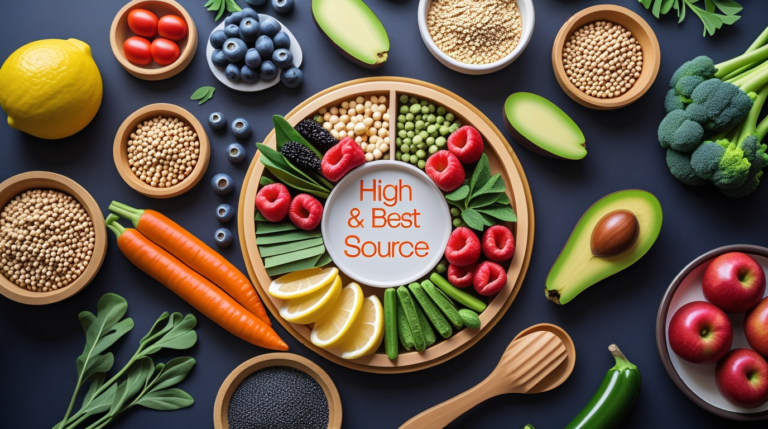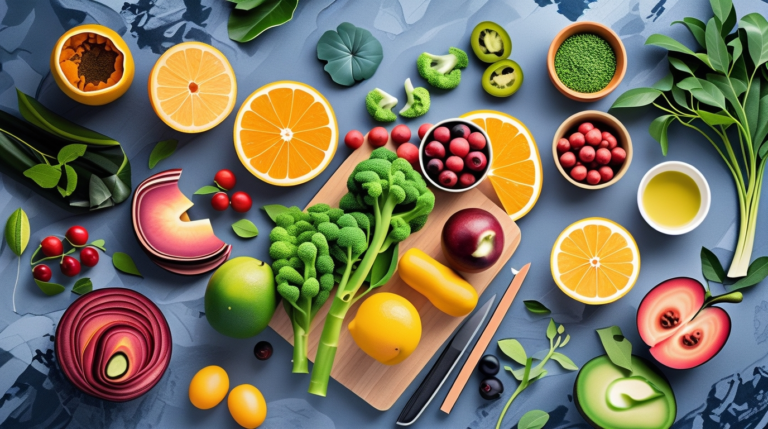In today’s health-conscious world, understanding the nutrients that play a significant role in our well-being is more crucial than ever. One such nutrient that often goes unnoticed is magnesium. So, what are foods high in magnesium, and why does it matter to your diet? This post aims to delve into these questions, offering valuable insights into why magnesium is essential for your health and which foods pack a magnesium punch.
The Importance of Magnesium in Your Diet
Why Magnesium Matters
Magnesium is a vital mineral that supports numerous bodily functions. It plays a critical role in muscle and nerve function, blood sugar control, and protein synthesis among various other processes. Despite its significance, many people are magnesium deficient, which can lead to several health issues such as muscle cramps, mental disorders, and osteoporosis.
Key Benefits of Magnesium
- Supports muscle and nerve function
- Helps regulate blood pressure
- Boosts bone health
- Aids in the production of energy
- Promotes heart health
Preventing Magnesium Deficiency
Magnesium deficiency can be a silent health issue. Many people may not realize they lack magnesium until they experience symptoms like fatigue, muscle cramps, or irritability. Integrating foods high in magnesium into your diet can prevent these symptoms and enhance overall well-being.
Top Foods High in Magnesium
Leafy Greens
Leafy green vegetables are an excellent source of magnesium. Spinach, kale, and Swiss chard are particularly high in this mineral. Incorporating these greens into your diet can significantly increase your magnesium intake. For a delicious way to enjoy these, consider adding them to a nutritious smoothie or salad.
Nuts and Seeds
Nuts and seeds are a powerhouse of nutrients, including magnesium. Almonds, cashews, and pumpkin seeds not only provide healthy fats and proteins but also contribute significantly to your daily magnesium needs. A handful of these as a snack can keep your magnesium levels in check and offer a quick energy boost.
Whole Grains
Whole grains like brown rice, quinoa, and whole wheat bread are other excellent options for boosting your magnesium intake. These grains are beneficial for your digestive health and also contribute to maintaining steady energy levels throughout the day. Consider replacing refined grains in your diet with whole grains for a healthier, magnesium-rich diet.
Fish and Meat
If you are not a fan of plant-based foods, fear not! Fish like mackerel and salmon are rich in magnesium and omega-3 fatty acids, making them great additions to a heart-healthy diet. Lean meats such as chicken also provide magnesium, albeit in smaller quantities.
How to Incorporate Magnesium-Rich Foods into Your Diet
Daily Diet Tips
Incorporating magnesium-rich foods into your daily diet doesn’t have to be complicated. Try adding spinach to your morning omelet or opting for whole grain toast for breakfast. Snack on nuts and seeds between meals, and include a portion of fish or lean meat in your main meals. Small changes can make a big difference in your daily magnesium intake.
Meal Planning and Recipe Ideas
Planning your meals ahead of time can ensure you’re getting enough magnesium. Consider preparing a quinoa salad with mixed greens, nuts, and a lemon-tahini dressing for lunch. For dinner, a fillet of salmon with a serving of steamed broccoli and brown rice makes for a nutrient-packed meal. These simple yet effective tweaks to your meal plan can help daily magnesium consumption.
Conclusion: Why It Matters to Prioritize Magnesium
The role of magnesium in maintaining optimal health cannot be overstated. It is essential to incorporate foods high in magnesium into your diet for better muscle, nerve function, and overall well-being. With a diverse array of magnesium-rich foods available, it’s easy to create a balanced diet that ensures you meet your needs.
In conclusion, understanding and addressing magnesium intake is a step toward better health and vitality. Make sure you’re getting your daily dose by including a variety of nuts, seeds, vegetables, whole grains, and lean proteins in your diet.
Your Next Steps
If you found this information helpful, explore more about balanced diets in our blog post on essential nutrients for energy or delve into how nuts and seeds can benefit your body. For more tips on maintaining a healthy lifestyle, consider signing up for our newsletter.
Call to Action
Let us know what you think about magnesium-rich foods in the comments below. If you have any questions or additional tips, feel free to share. Don’t forget to like, share, and subscribe to our blog for more insights on healthy eating and nutrition!





Leave a Comment